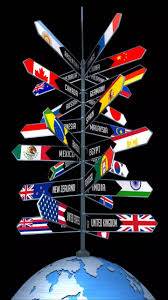The 5 Newest Countries in the World
In the modern era, new countries have emerged due to various reasons such as secession, independence movements, and international recognition. These new nations often reflect the changing dynamics of global politics, ethnic identity, and territorial disputes. Here’s a look at the five newest countries in the world, all of which gained independence in the last few decades.
1. South Sudan (2011)
South Sudan is the youngest country in the world, having gained independence on July 9, 2011, after a long struggle for autonomy from Sudan. The secession followed a peace agreement that ended Africa’s longest-running civil war, which had lasted for decades. The war was primarily fueled by ethnic, religious, and political tensions between Sudan’s Arab Muslim north and South Sudan’s Christian and animist south. After a referendum in January 2011, where nearly 99% of voters chose independence, South Sudan became a sovereign state. While its independence was a triumph for the southern Sudanese people, the country has faced internal conflicts, economic struggles, and humanitarian crises since its formation.
2. Kosovo (2008)
Kosovo declared independence from Serbia on February 17, 2008, following years of tension and conflict, particularly during the Kosovo War in the late 1990s. The war was marked by brutal ethnic cleansing, particularly against the ethnic Albanian majority by Serbian forces. NATO’s intervention in 1999 helped end the violence and led to Kosovo's administration under the United Nations. Despite the declaration of independence, Kosovo’s sovereignty remains disputed, with Serbia and some other countries, including Russia and China, refusing to recognize it as an independent state. However, over 100 countries, including the United States and most European Union members, have formally recognized Kosovo.
3. Montenegro (2006)
Montenegro’s journey to independence came in 2006 after a referendum that saw the majority of its population vote in favor of leaving the state union with Serbia. The union, known as the State Union of Serbia and Montenegro, had been in place since 1992, following the breakup of Yugoslavia. Montenegro’s decision to split from Serbia was largely influenced by desires for greater political and economic freedom, as well as a growing sense of Montenegrin national identity. The referendum was close, with 55.5% voting for independence, but Montenegro's path to sovereignty was largely peaceful, and it became the 192nd member of the United Nations after its independence was recognized.
4. Timor-Leste (2002)
Timor-Leste, or East Timor, gained its independence on May 20, 2002, after a long and bloody struggle against Indonesian occupation. The island of Timor had been a Portuguese colony until 1975, after which it was invaded by Indonesia. The Indonesian occupation was marked by widespread violence and human rights abuses, sparking a protracted independence movement led by groups like the National Council of Timorese Resistance. Following a UN-backed referendum in 1999, where the Timorese people overwhelmingly voted for independence, Indonesia withdrew from the region. The country officially became independent in 2002, and since then, it has made significant strides toward rebuilding its economy and governance, though challenges remain.
5. Eritrea (1993)
Eritrea became an independent country on May 24, 1993, after a lengthy struggle against Ethiopia. Eritrea had been a province of Ethiopia for much of the 20th century, but its people waged a 30-year-long war for independence that ended in a victory for the Eritrean fighters. Following a UN-supervised referendum, Eritreans overwhelmingly voted for independence, and the region became an independent nation. The first few years of Eritrean independence were marked by optimism, but the country has since faced significant challenges, including border conflicts with Ethiopia, authoritarian governance, and severe human rights abuses. Despite its challenges, Eritrea remains a sovereign state, and it is recognized internationally.
Conclusion
The emergence of these five countries—South Sudan, Kosovo, Montenegro, Timor-Leste, and Eritrea—reflects the ongoing reshaping of national borders and identities around the world. While each of these countries has faced unique struggles on their path to independence, they also highlight the enduring aspirations of peoples to determine their own political futures. These nations are still navigating the complex realities of statehood, with challenges that include political instability, economic development, and international recognition. As the global landscape continues to evolve, it’s likely that the story of new countries will continue to unfold.



